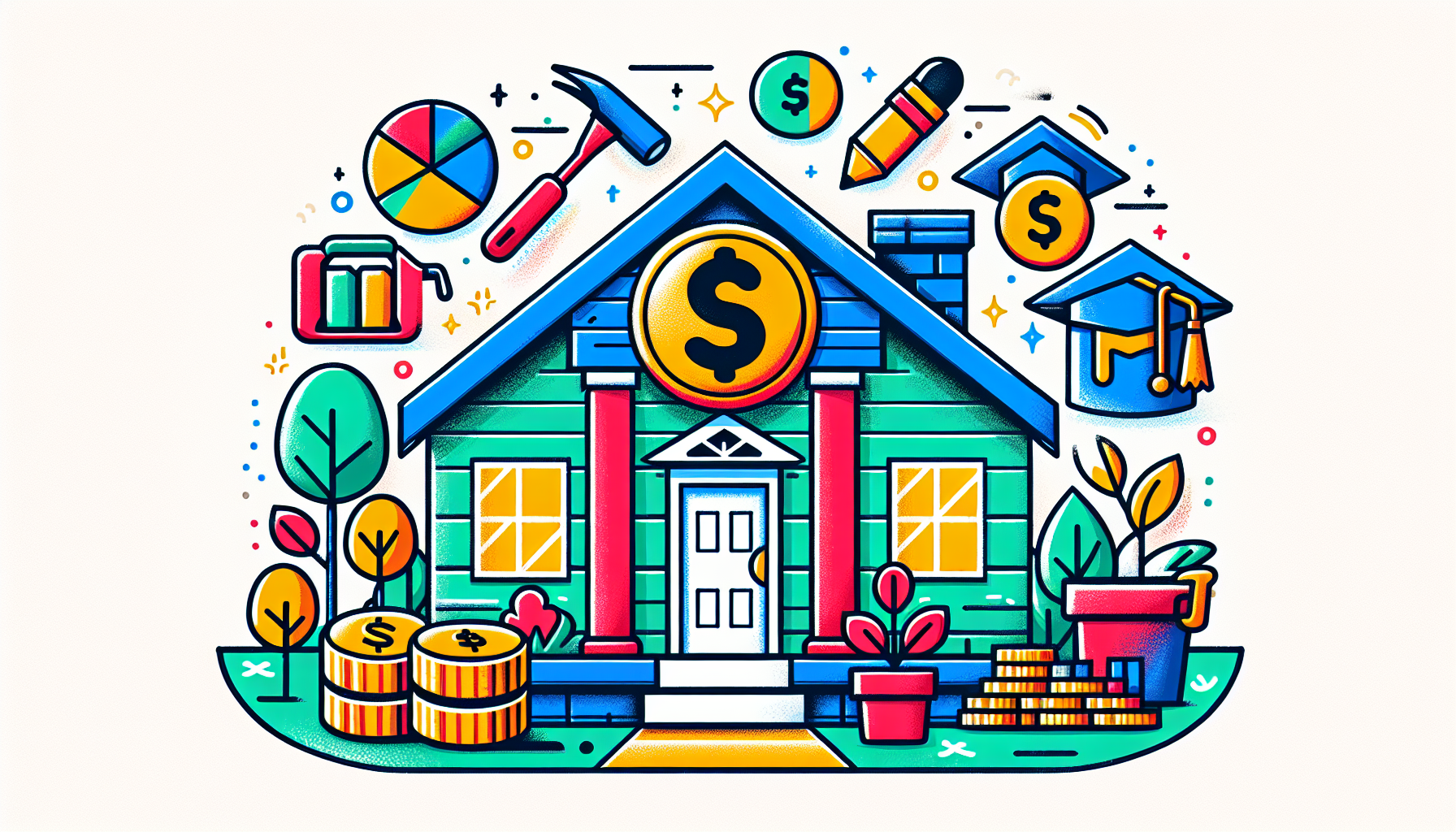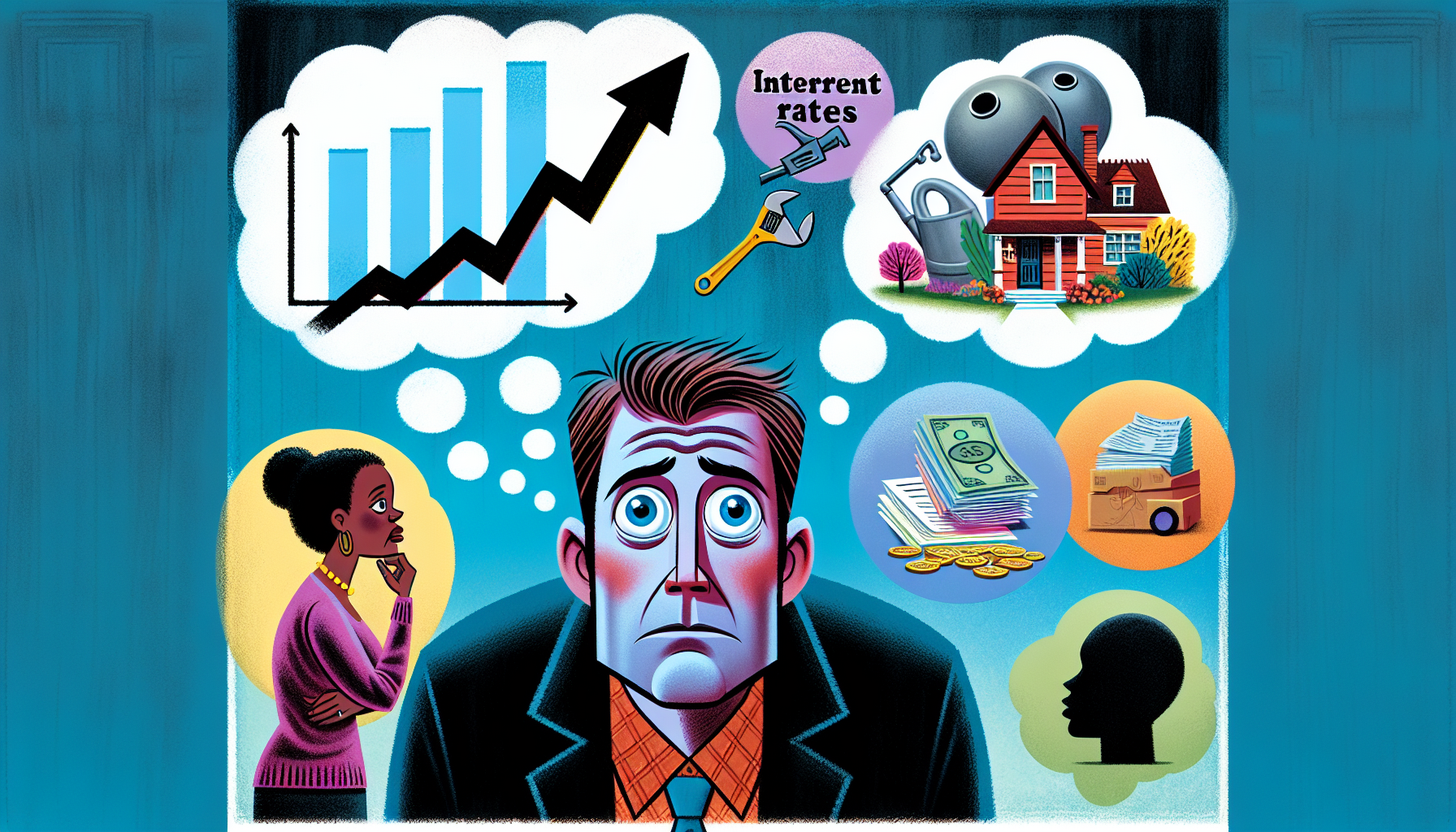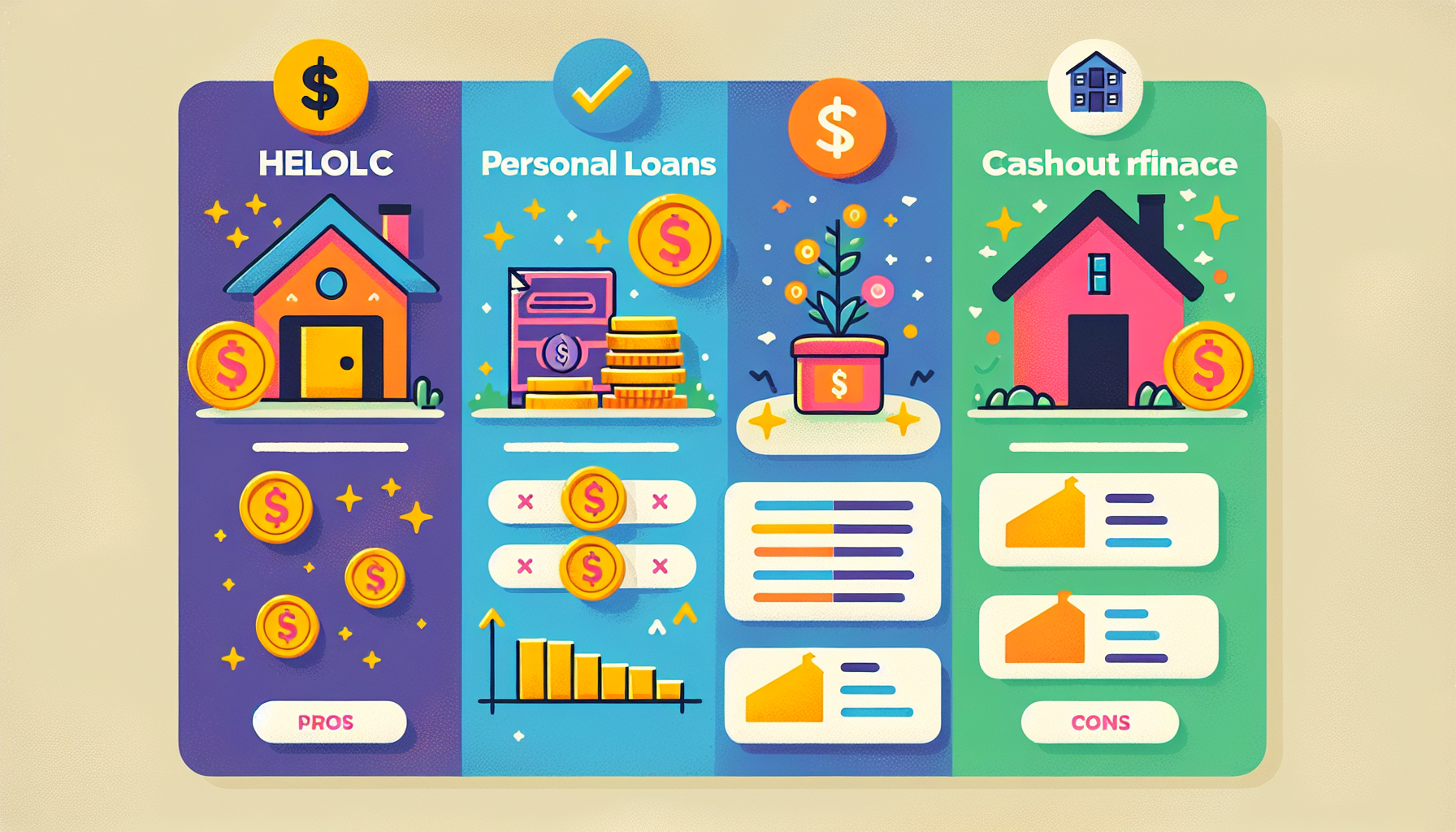What Is a HELOC?
A Home Equity Line of Credit (HELOC) is a flexible loan that lets you borrow against your home’s equity. Think of it like a credit card: you have a limit and pay interest only on what you borrow. This article will help you understand what is a HELOC, how it works, and the benefits and risks.
Key Takeaways
- A HELOC is a revolving line of credit that allows homeowners to borrow against their home equity. It offers flexibility in borrowing and typically lower interest rates than traditional loans.
- HELOCs consist of two phases: a draw period, during which only interest is paid on withdrawn amounts, and a repayment period, during which both principal and interest are paid, leading to potentially higher payments.
- While HELOCs have benefits such as flexibility and potential tax deductibility, they also carry risks, including variable interest rates and the risk of foreclosure if payments are not maintained.
Understanding a HELOC

A Home Equity Line of Credit (HELOC) is essentially a second mortgage that allows you to borrow against your home’s equity, functioning much like a credit card. Unlike a traditional loan, a HELOC provides a revolving line of credit based on your home equity, granting you the flexibility to withdraw funds as needed. This makes it an attractive option for homeowners who require a flexible borrowing solution for more significant financial needs rather than minor expenses.
The available equity in your home typically determines the credit limit for a HELOC. Most lenders allow you to borrow up to 80-90% of your home’s value minus any outstanding mortgage balances. One of the critical features of a HELOC is that you only pay interest on the amount you withdraw, not on the entire credit limit. This can result in lower borrowing costs compared to other forms of credit. Moreover, HELOC interest rates are usually lower than those of credit cards and personal loans, making them a cost-effective borrowing option.
HELOCs operate with a draw period, during which you can borrow funds, followed by a repayment period, where you pay back both the principal and the interest. This structure resembles a credit card, where you have a credit limit and pay interest only on the borrowed amount. Grasping these basics aids in deciding whether a HELOC suits your financial needs.
How a HELOC Works
A HELOC operates through two main phases: the draw period and the repayment period. During the draw period, which typically lasts about 10 years, you can borrow up to your approved credit limit as needed. You only pay interest on the amount you withdraw during this time, which can be beneficial for managing cash flow. The interest-only payment structure during the draw period keeps initial payments lower.
The repayment period begins once the draw period ends, usually lasting up to 20 years. During this phase, your monthly payments will include both principal and interest, leading to higher payments than the draw period. Planning for this transition helps in managing the higher payment amounts effectively.
Accessing funds from a HELOC is straightforward, with most lenders offering various methods such as checks, debit cards, or online transfers. This flexibility allows you to use the funds for various purposes, such as home improvements, education expenses, or a financial safety net. Knowing how a HELOC operates enables you to utilize this financial tool effectively.
Key Benefits of a HELOC

One of the standout benefits of a HELOC is its flexibility. Unlike a traditional loan, a HELOC allows you to borrow only what you need when needed and pay interest solely on the amount used. This can be particularly advantageous for large, ongoing projects like home renovations, where costs fluctuate.
HELOCs often come with lower interest rates than credit cards and personal loans, making them a cost-effective borrowing option. This lower cost can be especially beneficial when consolidating high-interest debt, as it allows you to save on interest payments. Additionally, responsibly managing a HELOC can improve your credit score by demonstrating your ability to handle credit effectively.
Another significant benefit is the high credit limits many HELOCs offer, sometimes reaching up to $1 million. This can provide a substantial financial safety net, allowing you to tackle significant expenses without needing multiple loans. Furthermore, the interest on HELOC funds used for home improvements may be tax-deductible, adding another layer of financial advantage.
Potential Drawbacks of a HELOC

Despite their benefits, HELOCs come with certain risks. One of the primary concerns is the variable interest rate, which can fluctuate based on market conditions. While some lenders offer the option to convert a portion of the HELOC balance to a fixed interest rate, the potential for rising rates can lead to higher monthly payments. This unpredictability can make budgeting more challenging.
Another significant risk is that your home secures a HELOC. This means that if you fail to make your HELOC payments, you risk losing your property. It’s crucial to carefully consider this risk before using a HELOC for non-essential or luxury purchases, as it could jeopardize your financial stability. Moreover, borrowing against your home’s equity reduces your financial safety net, particularly if property values decline.
Additionally, making interest-only payments during the draw period can lead to a larger balance when the repayment phase begins, making it harder to repay the principal. Some lenders may also charge fees for early repayment or inactivity on the HELOC account, adding to the cost of borrowing. Being aware of these potential drawbacks helps make a more informed decision about whether a HELOC suits you.
HELOC Requirements
To qualify for a HELOC, you need significant home equity. Most lenders allow you to borrow up to 85% of your home’s value minus any outstanding mortgage balance. This indicates that you need at least 15% equity in your home. This is in addition to the amount you owe on your mortgage. A good credit score, typically 680 or higher, is often required to secure favorable terms.
Lenders also consider your debt-to-income ratio, preferring it to be below 43%. Stable income verification through pay stubs or tax returns is another critical requirement. These criteria ensure that you have the financial stability to manage the HELOC payments and reduce the risk for lenders.
How to Get a HELOC
The first step in obtaining a HELOC is deciding how much equity you want to access. Calculate your existing equity by subtracting your remaining mortgage from your home’s current value. Gather necessary documentation, including recent bank statements, proof of income, and homeowner’s insurance.
Once you have your documentation ready, shopping around and comparing offers from multiple lenders is crucial. Look for the best interest rates and fees to ensure you get the most favorable terms. After submitting your application, the approval process can take a few weeks to over a month. Patience and thoroughness are essential during this stage.
Being well-prepared and understanding the application process can streamline your HELOC approval, granting efficient access to needed funds.
Costs Associated with a HELOC
While HELOCs offer many benefits, they also come with associated costs. Typical closing costs range from 2% to 5% of the loan amount. You may also encounter additional fees such as application, title search, and attorney/document preparation fees.
Some lenders charge annual maintenance fees, although these may be waived for the first year. Be aware of potential cancellation fees if you close the HELOC early and inactivity fees if you do not use the credit line within a specified timeframe. A fixed-rate conversion fee may apply if you convert a variable interest rate HELOC to a fixed rate.
To fully understand a HELOC’s costs, compare the interest rate with its annual percentage rate (APR) and consider all loan costs. Knowing these costs upfront enables an informed decision and helps avoid unpleasant surprises later.
Best Uses for a HELOC

HELOCs are versatile financial tools that can be used for various purposes. One widespread use is for home renovations, as the HELOC interest tax deductible on funds used for this purpose may be tax-deductible. Home repairs and improvements can increase your property’s value, making a HELOC an intelligent investment.
Another practical use of a HELOC is for debt consolidation. You can save on interest payments by consolidating high-interest debt, such as credit card balances, into a HELOC with a lower interest rate.
Additionally, HELOCs can provide a financial safety net for unexpected expenses or be used to cover education costs, making them a flexible financing option for various needs.
HELOC vs. Other Financing Options

While a HELOC offers many benefits, comparing it with other financing options is essential to determine the best fit for your needs. Each financing method has unique advantages and disadvantages, which can help you make a more informed decision.
In the following subsections, we will compare a HELOC with a home equity loan, cash-out refinance, and personal loan. Each comparison will highlight the key differences, helping you assess which option aligns best with your financial goals.
HELOC vs. Home Equity Loan
A HELOC and a home equity loan allow you to borrow against your home’s equity, but they differ significantly in structure. A HELOC provides a revolving credit line, allowing you to withdraw funds as needed and pay interest only on the amount used. This flexibility can be beneficial for ongoing expenses.
In contrast, a home equity loan offers a lump sum with a fixed interest rate, making it suitable for one-time expenses. While HELOCs typically have variable interest rates, home equity loans stabilize fixed monthly payments.
When deciding between the two, consider whether you need flexible access to funds or prefer the predictability of a lump sum.
HELOC vs. Cash-Out Refinance
A cash-out refinance involves replacing your existing mortgage with a new loan for a higher amount, allowing you to take the difference in cash. This method provides a lump sum payment and can potentially lower your interest rate if current rates are favorable. However, as the new loan amount is higher, it also increases your monthly mortgage payments.
In comparison, a HELOC loan offers a revolving line of credit that you can access as needed without altering your existing mortgage. This can be advantageous if you need flexible access to funds and want to keep your current mortgage terms.
Weighing these factors can help you decide which option suits your financial situation better.
HELOC vs. Personal Loan
Personal loans are typically unsecured, meaning they don’t require collateral, unlike a HELOC, secured by your home equity. This security often results in lower interest rates for HELOCs than personal loans. However, personal loans can be easier to obtain and faster to access since they don’t involve your home as collateral.
On the downside, personal loans generally have higher interest rates and shorter repayment periods, leading to higher monthly payments. If you’re considering a personal loan to cover HELOC payments, ensure that you can secure a favorable interest rate and that it makes financial sense in the long term.
Managing Your HELOC Payments
Managing your HELOC payments effectively is crucial to avoid financial pitfalls. Start by establishing a budget before utilizing your HELOC to ensure you don’t borrow more than you can repay. Keep track of variable interest rates, which can change during the draw period, impacting your payment amounts.
When the draw period concludes, your monthly payments will increase as you repay the principal and interest. Making early payments towards the principal during the draw phase can reduce your overall debt and ease the transition into the repayment period.
If higher repayment amounts become unmanageable, consider refinancing your HELOC to explore options for extended repayment periods or fixed-rate loans.
What to Do If You Can’t Keep Up with HELOC Payments
If you struggle to keep up with HELOC payments, the first step is to contact your lender. Lenders may offer alternative payment plans or solutions to help manage your financial situation. Open communication with your lender can provide options to prevent foreclosure and protect your home.
Exploring debt consolidation or refinancing options can also provide relief. Assessing your financial situation and taking proactive measures can help you manage HELOC payments effectively and avoid severe consequences.
Summary
A HELOC can be a powerful financial tool if used responsibly. It offers flexibility, lower interest rates, and the potential for tax-deductible interest when used for home improvements. However, it’s essential to understand the risks, such as variable interest rates and the possibility of losing your home if payments are missed.
By comparing a HELOC with other financing options and understanding the application process, costs, and best uses, you can make an informed decision that aligns with your financial goals. Use this knowledge to harness the power of your home equity wisely and secure your financial future.
Frequently Asked Questions
What is a Home Equity Line of Credit (HELOC)?
A Home Equity Line of Credit (HELOC) is a revolving line of credit that enables homeowners to borrow against their home equity, functioning similarly to a credit card where you pay interest only on the amount withdrawn. This offers flexibility in accessing funds as needed.
What are the main benefits of a HELOC?
A HELOC offers flexible borrowing options and generally lower interest rates compared to other forms of credit. Additionally, it may provide tax-deductible interest when used for home improvements and can help enhance your credit score with responsible management.
What are the risks associated with a HELOC?
The risks associated with a HELOC include variable interest rates that may increase monthly payments, the potential loss of your home due to missed payments, and a diminished financial safety net if property values fall. It is crucial to carefully consider these factors before proceeding.
How can I qualify for a HELOC?
To qualify for a HELOC, you must have substantial home equity, a credit score of at least 680, a debt-to-income ratio below 43%, and proof of stable income through documents such as pay stubs or tax returns. Meeting these criteria will enhance your chances of approval.
What should I do if I can’t keep up with my HELOC payments?
If you are unable to keep up with your HELOC payments, it is crucial to contact your lender to discuss alternative payment plans. Open communication can help you explore solutions and avoid potential foreclosure.

